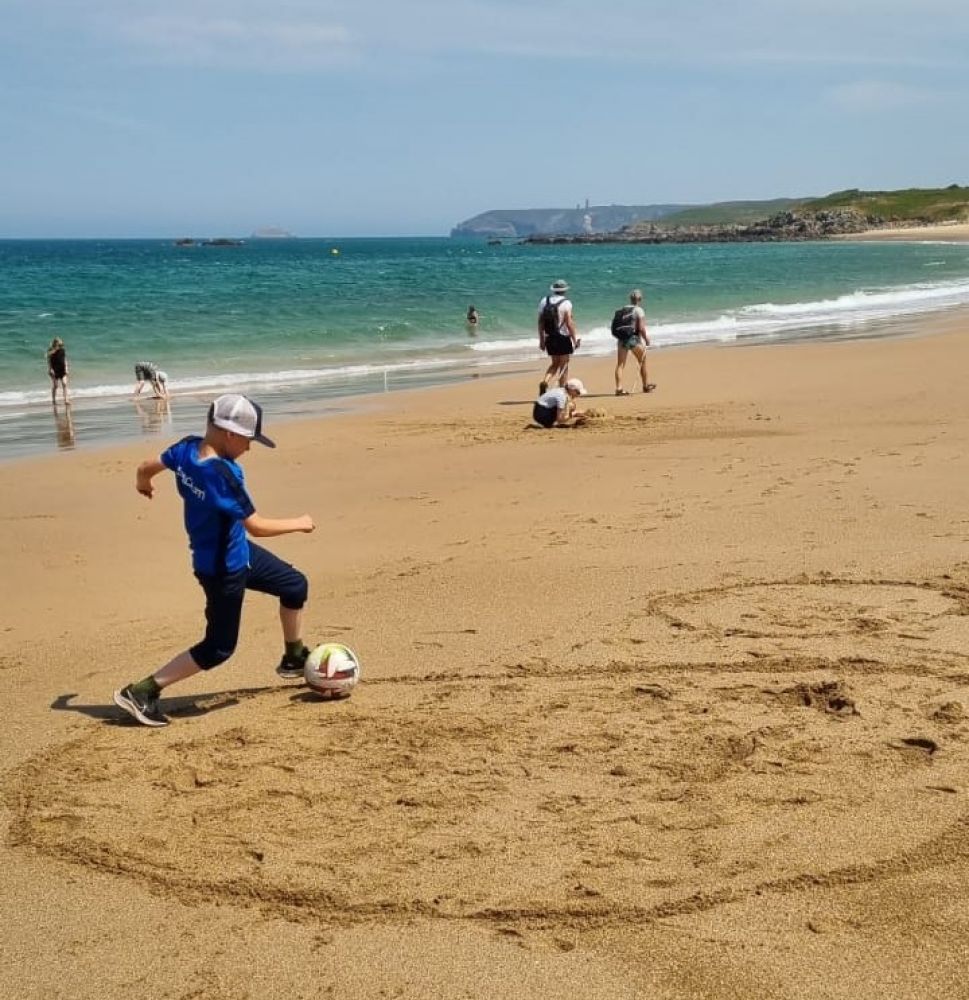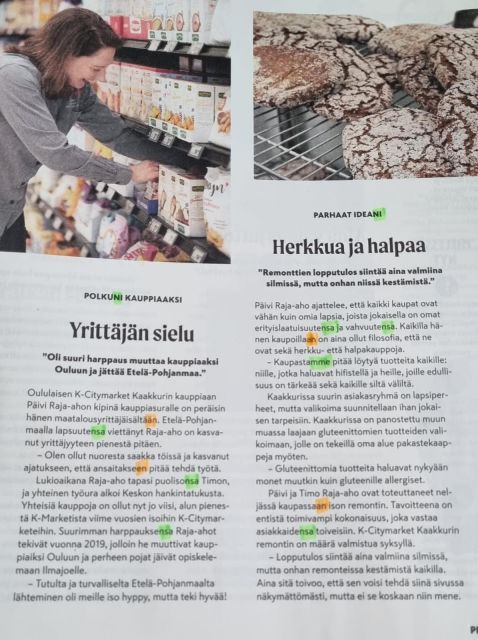Kurkilaaksossa tapahtuu
-
The joy and frustration of learning
Learning Finnish, our fascinating language, is certainly rewarding, but I have found over the years that students also have some moments of frustration. Sometimes there is a real spirit of resistance in the classroom and I see imaginary protest signs on students' heads. Three things in particular provoke a lot of emotion in students.
The first is what I call the surprise k. For example, when we are studying the conjugation of verb type 4 and I write on the board
pelata – pelaan
pelätä - pelkäänI hear at least sighs, but sometimes the students react like football players protesting the referee's decision. (Particularly emotional are those students who treat the dots of the letter 'ä' as extra decorations with no independent function. The words ‘pelata’ and ‘pelätä’ mean exactly the same to them. So the teacher then demonstrates how to play football and how to fear football.) If the students happen to know the word ‘pelko’, the reaction is calmer.
The change of the consonants k, p and t and other changes in the stem of words is a big entity that needs to be learned from the very beginning of the language learning process. That variation of k and its disappearance in different forms of a word seems to be particularly tricky.(I've ended up making a kind of joke about it to minimise the negative feelings of students.
maata, but surprise, surprise, hymiö makaan)Spoken language
The second moment of frustration for many Finnish language learners comes when they realise that, in addition to the standardised written language, they have to learn to understand spoken language if they really want to communicate with people. I am not talking here about dialects, which exist in all languages, or slang, but about the fact that the difference between written and spoken language in Finnish is exceptionally large and goes down to a structural level.This step is easier for those whose mother tongue has a similar situation. For some, it is a question of identity; they do not want to use "bad language". It doesn't help when I say that in Finland, teachers at school, bosses at work and even the President of the Republic speak colloquial language, especially the one we have now. It's just two different forms of language.
Nowadays, fortunately, both spoken and written language are taught from the beginning in most materials. In the past, it was apparently thought that if a student knew the phrase "Tarvitsevatko he apua?” they would somehow automatically understand that "Tarviiks ne apuu?" was the same thing.
However, the main features of the colloquial language widely used in Finland and commonly spoken in the media are not very many and are easy to teach. Then you just need a lot of practice.
I have sometimes wondered whether the process of understanding Finnish spoken language is similar to that of understanding spoken French. In French, there is such a big difference between what you see and what you hear.
“Qu’est-ce que c’est ? » becomes « kesköse » for a Finnish ear.
Isn’t it a bit same in Finnish when you learn
“seitsemänkymmentäkaksi” but in reality you hear for example ”seitkytkaks”? Or “Minulla ei ole” which becomes “Mulleioo”.
Of course, there are also differences in vocabulary. Students don't always believe me when I tell them that for many people ‘polkupyörä’ is ‘fillari’ and some come to work ‘fillarilla’.
Here's a picture to prove it. It's from Turku.
Possessive suffix vowel+n
Fortunately, language learning is mostly far from frustrating, but sometimes there are even angry students in the classroom. This can happen when students take any authentic text and read sentences like
On tärkeää pitää huolta itsestään.
Maria on huolissaan äidistään. Hän soittaa äidilleen joka päivä.Students who are interested in grammar wonder what these strange forms are, which look a bit like illatives or kind of verb forms, even though they are not verbs.
When I tell them that they are possessive suffixes, used in all ordinary texts, some students get angry. I may be the first teacher to tell them the truth.
The difficult choice for a Finnish teacher is to decide how much information to give in the early stages of learning and what to reveal later. Many materials have concluded that the possessive suffix is something that can be hidden from students. Or it is said that there are some in the written text, although they are rarely used in spoken language. Finnish language textbooks often use a curious mixed form that is neither standard in written language nor natural in spoken language. Like this:
Minun ystävä Matti asuu Turussa hänen tyttöystävän kanssa. Hänen tyttöystävän nimi on Hanna. Heidän naapurit ovat kotoisin Kiinasta...
Often the 3rd person possessive suffix variant -nsa/-nsä has been taught from the start because it is perhaps easier to pick up, but not the variant vowel +n, although, and this is a direct citation from Leila White's book A Grammar Book of Finnish: "Modern standard Finnish uses the 3rd person possessive suffix vowel+n whenever possible."
So how could you say those example sentences at the beginning if you don't know the vowel+n variant?
On tärkeää pitää huolta itsestänsä.
Maria on huolissansa äidistänsä. Hän soittaa äidillensä joka päivä.Not very natural. And without any possessive suffixes?
Maria on hänen huolissa hänen äidistä.
No.
On tärkeää pitää huolta itsestä. Hän soittaa äidille joka päivä.
Possible, but not very beautiful.The picture is a proof that possessive suffixes are still in use in Finnish, despite what some people claim. The picture shows an article in Pirkka magazine, where I have marked the other possessive suffixes in green and the vowel+n variants in orange.
Takaisin






